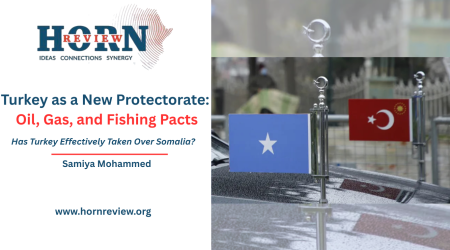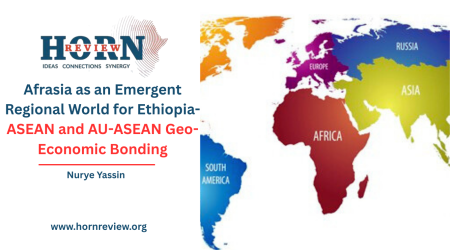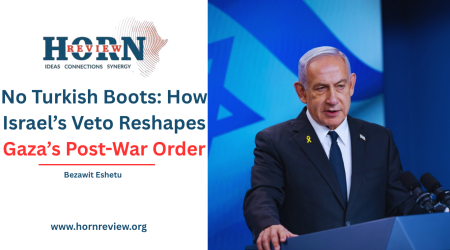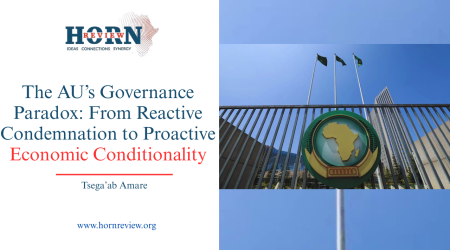
12
Nov
Iran’s Drone Supply Network to Eritrea and Ethiopia’s National Security Imperative
The recent reported satellite imagery revealing arrival of Belarusian Ilyushin-62 freighter in Massawa, tracing the route of a sanctioned Iranian Fars Air Qeshm 747 just weeks earlier, has triggered renewed attention to the quiet alignment between Tehran and Asmara. What appears to be routine cargo traffic may in fact signal a developing military cooperation centered on drone technology, a development that has wider implications for Red Sea security and Ethiopia’s security interests.
Iran has spent years building networks that extend its influence beyond the Persian Gulf. From supporting the Houthis in Yemen to reportedly cultivating ties in Sudan, Tehran views the Red Sea as an important corridor to project power, challenge Israel, and counter Western naval presence. Access to Eritrean ports such as Massawa would give Iran a foothold on Africa’s side of the Red Sea complementing its leverage on the Arabian Peninsula through the Houthis.
This is not the first time Eritrea has opened its ports to Iran. In the mid-2000s, Iranian vessels reportedly used Eritrean ports for refueling and logistics. Currently, the reported reappearance of Iranian-linked cargo flights, including from Qeshm Fars Air, a company under U.S. sanctions for moving weapons and drones suggests a revival of that relationship under new geopolitical conditions.
The nature of the aircraft themselves intensifies the concern. Both the IL-62 and the B747-281F are heavy-lift platforms, their cavernous holds perfectly suited for transporting disassembled drones, spare parts, precision munitions, and the technical advisors needed to operationalize them. Iran has proven remarkably effective at delivering sophisticated unmanned systems faster than many traditional suppliers, a capability it has honed from Syria to Yemen. For nations in the Horn of Africa, these drones offer a potent asymmetric advantage in border conflicts and proxy wars, fundamentally altering local security calculi.
This web of relationships complicates Ethiopia’s strategic calculus immensely. Iran has consistently expressed respect for Ethiopia’s sovereignty, especially amid Western pressures. However, Iran’s growing intimacy with Eritrea poses a delicate dilemma for Ethiopia’s security calculus. The same actor maintaining diplomatic warmth with Addis Ababa is now deepening defense cooperation with Asmara, its most persistent regional spoiler. Thus, Ethiopia cannot ignore the operational reality of IRGC-linked cargo flights landing in the port city of its most intractable rival.
Ethiopia’s relation with Eritrea remain raw and unresolved in the aftermath of the Tigray war. Asmara’s posture has been aggressively revisionist, characterized by arming proxies, obstructing Ethiopia’s maritime ambitions, and opposing Addis Ababa’s regional initiatives. The prospect of advanced Iranian drones, surveillance systems, or missile technology entering Eritrea’s arsenal would directly upset the fragile security equilibrium of the region and also Ethiopia’s northern border as it emboldens Asmara’s strategic defiance.
Isaias Afwerki’s foreign policy is driven less by ideology than by survival and leverage. Allowing Iranian logistical access could serve the purpose of financial benefits for a heavily sanctioned state. However, this transactional diplomacy comes at a regional cost. Eritrea’s ports risk becoming conduits for drone parts, precision weapons, and surveillance systems that can be used to alter local power balances particularly against Ethiopia.
For Ethiopia, the situation carries multiple layers of risk. Beyond military implications, the growing Iran–Eritrea axis may also complicate Ethiopia’s economic and diplomatic priorities. Addis Ababa is working to re-establish maritime access through regional cooperation and port negotiations. If Eritrea turns its coastline into a hub for Iranian or sanctioned military activities, it will attract international scrutiny and militarization making Ethiopia’s pursuit of stable Red Sea access more difficult and politically costly.
The Ethiopian government therefore must balance three considerations: maintaining cordial and constructive engagement with Tehran dialogue with vigilance, and diplomacy with deterrence, which will be essential to prevent the reemergence of a northern destabilization arc. Secondly, monitoring and deterring Eritrean misuse of the Red Sea corridor. And third, ensuring that Western partners perceive Ethiopia as a responsible actor in regional security without becoming entangled in proxy disputes.
In addition, the United States Treasury’s Office of Foreign Assets Control (OFAC) has already designated Qeshm Fars Air and specific aircraft tail numbers. This makes it illegal for any person or entity to engage in transactions with them and exposes any service provider (refueling, maintenance, insurance) that facilitates their flights to secondary sanctions. For Ethiopia, this provides a diplomatic opening. Addis Ababa can present evidence of these flights to the U.S. and EU, urging them to enforce these existing designations and to consider new sanctions targeting Eritrean officials and entities involved in facilitating the transfers. Washington already views Asmara’s opaque militarization and defiance of regional norms as a destabilizing force; coupling this with Tehran’s sanctioned networks invites renewed scrutiny and potential sanctions on entities operating through Eritrea.
Moreover, faced with this multidimensional challenge, Ethiopia must pursue a coherent and disciplined response strategy that marries verification with diplomacy and resilience with deterrence. The immediate priority must be institutionalizing verification capabilities, using satellite imagery and open-source intelligence to build an undeniable evidentiary base of the militarization. This factual record is essential for mobilizing regional and international partners. Diplomatically, Ethiopia must leverage its channels with Tehran to articulate clear red lines, ensuring that dialogue does not translate into complicity with Eritrea’s destabilizing behavior. Simultaneously, discreet coordination with navies operating in the Red Sea could help safeguard vital Ethiopian trade routes.
On the defense front, a recalibration of military posture is imperative. Investments in integrated air defense systems, particularly counter-drone technologies such as electronic warfare and jammers, should be prioritized for deployment along the northern frontier. Ultimately, for Ethiopia, whose foreign policy seeks regional stability, economic integration, and maritime access, Eritrea’s renewed alliance with Iran poses an existential challenge. It demands a response that is both nuanced and firm.
While the primary threat is to the Ethio-Eritrean border, the cargo from Tehran could also be destined for a different conflict. The ongoing civil war in Sudan presents another plausible destination, where the allegedly Iranian-equipped Sudanese Armed Forces (SAF) under General al-Burhan are in recent weeks losing ground to the Rapid Support Forces (RSF). Establishing an air bridge via Massawa to resupply the SAF would be a logical move for Iran, extending its influence into the Nile Valley and countering its Gulf rivals. For Ethiopia, this would mean a further internationalization and extension of conflict on its Sudan border. Furthermore, the RSF has already warned that any route or destination used to support the SAF is a legitimate military target. If the current support through Massawa were channeling military assistance to the SAF, Eritrea would become a focal point for RSF strikes, as Hemedti has already issued this warning.
By Yonas Yizezew, Researcher, Horn Review










